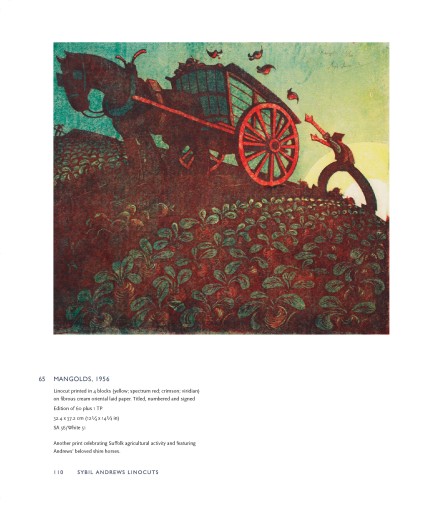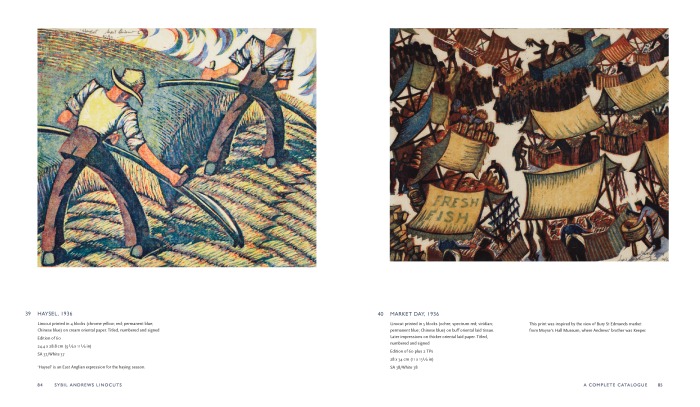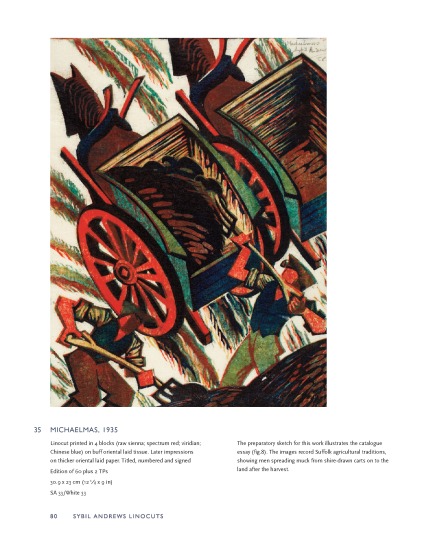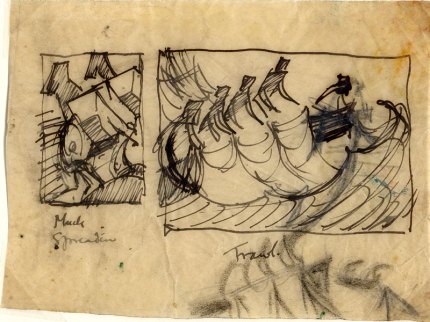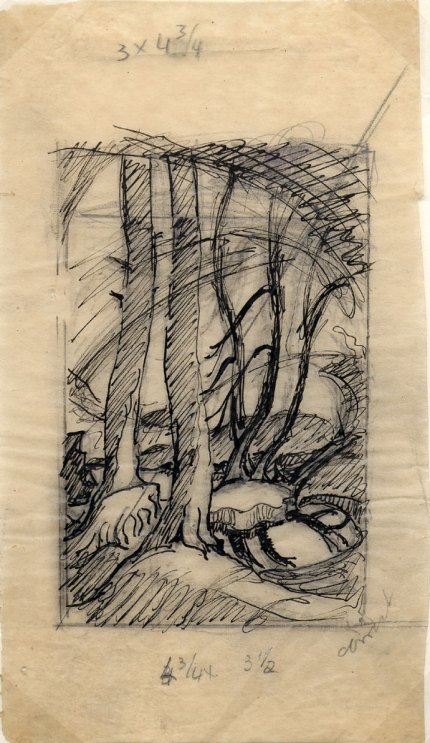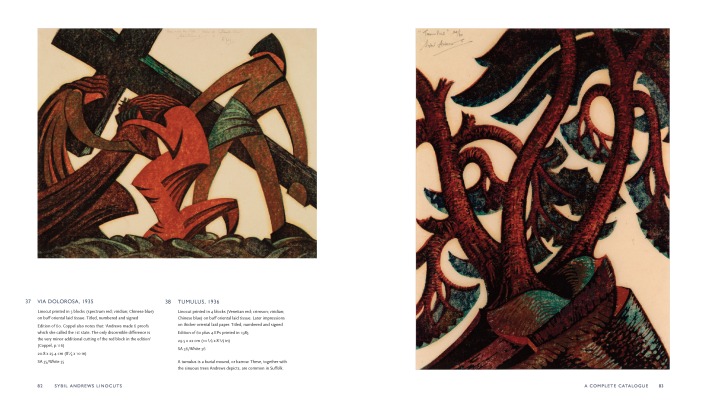Sybil Andrews in Bury St Edmunds
Hana Leaper discusses Linocut artist Sybil Andrews’ childhood in Bury St Edmunds and the lasting impact of this rural setting in her vibrant modernist prints.
Whilst preparing the catalogue essay for my forthcoming catalogue raisonné of Sybil Andrews’ colour linocuts, I was struck by both the prevalence of images from her childhood hometown, Bury St Edmunds, a small market town in East Anglia, and the unique manner in which the artist presented rural, agricultural scenes in a radically modernist idiom. In Mangolds (below) a bright circular sun haloes a labourer tossing Mangolds (a locally-grown root vegetable) into a shire-horse-drawn cart. The figure’s legs echo the curves of the sun, and his upraised arms form a contiguous line of motion with the flying vegetables and the arching neck of the straining horse.
In recognition of Andrews’ importance in the town, St Edmundsbury Borough Council recently bought two of her sketches with the help of funds from the Friends of Moyse’s Hall Museum and the Victoria and Albert Museum. It seems remarkably fitting that they can now be displayed in Moyse’s Hall, the museum where her brother, Hal Andrews, acted as Keeper between 1933-9, and where Andrews produced the studies for her print Market Day.
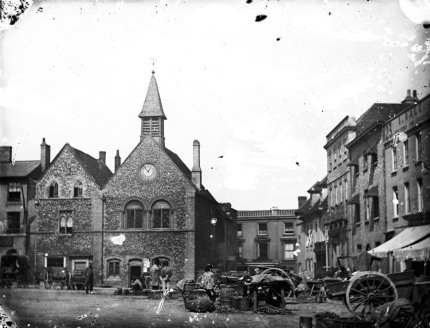
Early view of Moyse’s Hall, today Moyse’s Hall Museum, circa 1860, showing the market place. Courtesy of the Spanton-Jarman Collection, Bury St Edmunds Past and Present Society, Bury St Edmunds, Suffolk.
In return for the museum’s kind permission to reproduce one of the images in Sybil Andrews Linocuts, A Complete Catalogue, I agreed to give a talk at a special event for the vibrant Friends community, explaining the importance of the images, and Andrews’ connection to the town.
The first sketch consists of two images, the left labeled ‘Muck Spreading’, and the right ‘Trawl’, in Andrews’ hand. ‘Muck Spreading corresponds directly to Andrews’ linocut Michaelmas of 1935.
In this important study, the component elements of the final print are all present, yet startlingly abstracted. It isn’t a ‘sketchy’ impression, but an exact plot for the finished work. Both horse and human figures are reduced to the very bare minimum of form, and yet they correlate exactly with the finished linocut giving us a valuable insight into Andrews’ process.
The second sketch now in the Bury St Edmunds collection is for Tumulus, which is the regional name for a burial, or barrow, mound. These, together with the sinuous conifers Andrews depicts, are common in Suffolk Breckland landscapes.
In this instance, the sketch shows a more fluid rendering of the scene, it’s sensitivity conveys a sense of the veneration Andrews’ felt for this ancient, sacred ground.
My catalogue raisonné of Andrew’s colour linocuts follows this remarkable and forthright artist’s journey from her rural youth in Bury St Edmunds, through her metropolitan art training with Claude Flight at the Grosvenor School of Art in London, to her emigration to the remote logging town in Canada where she made her home between 1947 and her death in 1992. Alongside Andrews’ loyalties to her place of birth and her fascination with shire horses, the catalogue essay also details about her creative partnerships, discusses her philosophical writings from the beginning and end of her career, and examines her commitment to ‘work, work, work’. Expanding on Peter White’s Sybil Andrews: Colour Linocuts (1982) and Stephen Coppel’s Linocuts of the Machine Age (1995), two previous, out-of-print catalogues, Sybil Andews Linocuts features 87 colour linocut plates, including previously unpublished works, as well as additional illustrations, including works by Andrews in other media. It will be published with Lund Humphries later this year, to coincide with an exhibition of Andrews’ linocuts at the Osborne Samuel Gallery between 22nd October and 14th November 2015.
Hana Leaper was formerly a lecturer in English literature and art history for the Department of Continuing Education at the University of Liverpool and on the art and design programme at the University of Wolverhampton. After a six-month period cataloguing and curating the Angelica Garnett Gift at Charleston, she currently works at the Paul Mellon Centre for British Art on the British Art Studies journal.
[originally published March 2015 on blog.paul-mellon-centre.ac.uk]


